These Sweet Potato Sage Sourdough Milk Bread Rolls have a lovely golden color due to the inclusion of roasted sweet potato; a fluffy texture from the tangzhong roux; and a warm buttery flavor with a hint of sage.
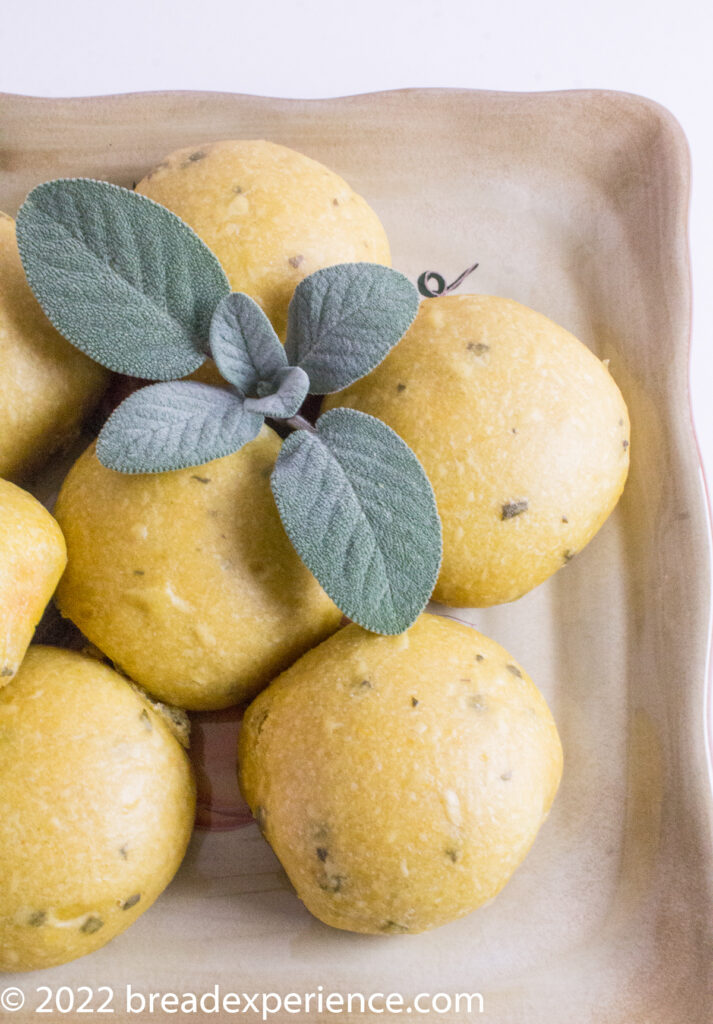
THIS POST MAY CONTAIN AFFILIATE LINKS. FOR MORE INFORMATION, PLEASE VISIT THE PRIVACY POLICY PAGE.
Why use tangzhong in these milk bread buns?
These milk bread buns, also known as Japanese milk bread rolls, or Hokkaido milk bread rolls are made using tangzhong, an Asian technique developed to make breads soft and fluffy. Also referred to as a tangzhong water roux, this method utilizes a precooked mixture of flour and water to soften the dough.
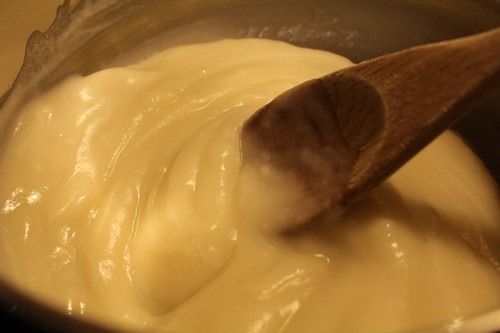
When I first learned about the tangzhong method several years ago, I had this great idea to experiment with it in all types of bread. I’ve made a number of breads using this method, but there are so many possibilities, I haven’t yet scratched the surface.
You might enjoy some of these other breads made with tangzhong:
- Hokkaido Milk Bread
- Soft and Fluffy Checkerboard Tangzhong Rolls
- Einkorn Spelt Tangzhong Bread
- Fluffy Kefir Milk Einkorn Tangzhong Buns
Why I chose these Sweet Potato Milk Bread Rolls
I was looking for ideas for rolls for Thanksgiving, when I ran across a recipe for Rosemary-Butternut Squash Milk Bread Buns in the Fall issue of Baking from Scratch magazine.
I decided to make some milk bread buns but with a different flair.
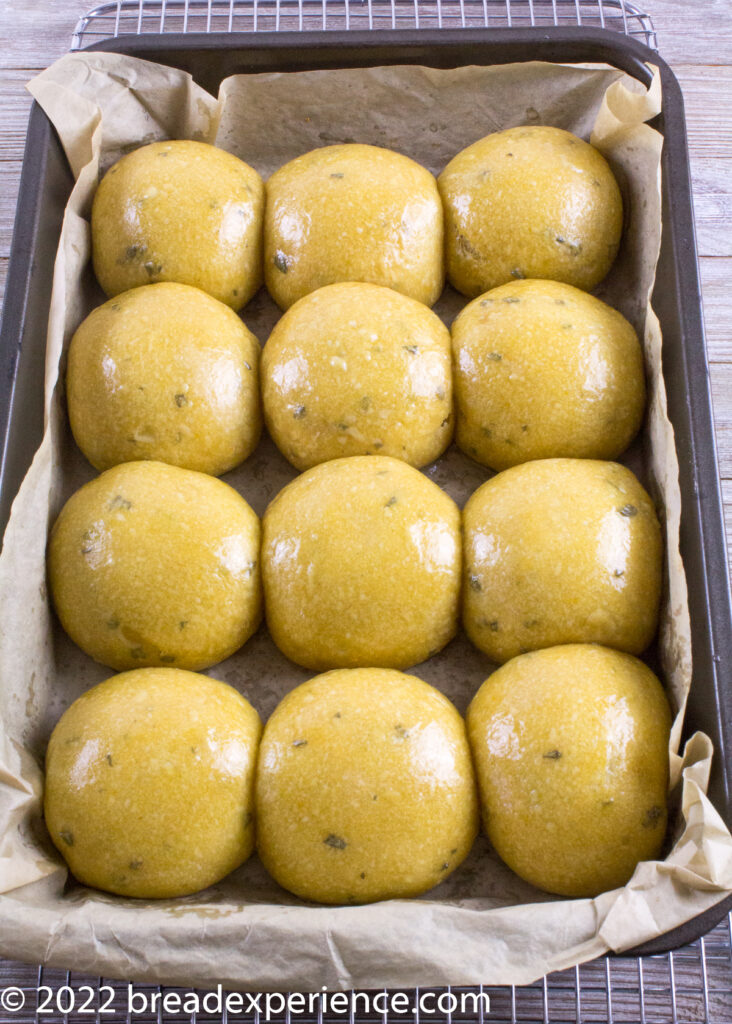
I began by making a yeast version with pumpkin, then I made a pumpkin sourdough version. I like the flavor of the pumpkin rolls, but the dough was a bit sticky. It could be because I used pumpkin that I had roasted and pureed. I think canned pumpkin might be less sticky.
After making a couple of batches using pumpkin puree, I switched to roasted sweet potato. This is my favorite version so far. The dough was much easier to work with.
The rolls featured in the Bake from Scratch article were way too sweet, for me, so I changed that variable as well. The dough needs a little sugar as an enrichment, especially when using dried yeast, but I thought the sweetness distracted from the savory flavor so I reduced it from 1/2 to 1/4 cup.
What flour should you use in these milk bread buns?
I used stone-ground all-purpose flour from a local wheat grower in Georgia. I also tested these rolls using King Arthur Baking all-purpose flour. Both flours worked well.
You could incorporate some whole grain, but if you’re looking for a fluffy texture, the greater proportion should be white flour.
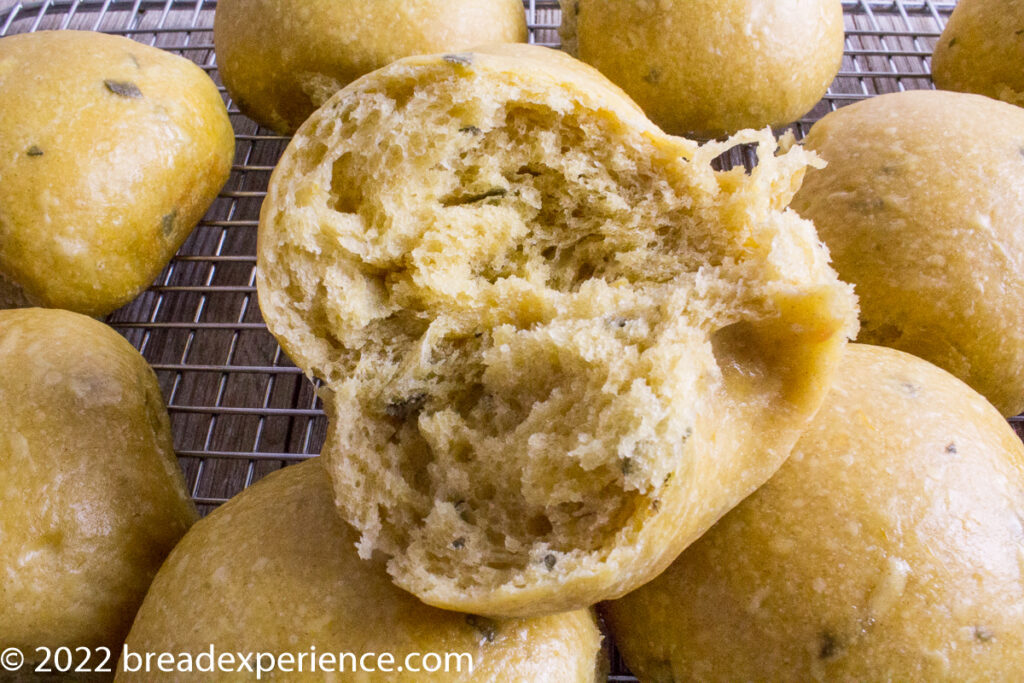
Sauté the sage in brown butter to reduce the potency
I chose to use sage in these rolls because it goes really well with turkey, and I have a big plant growing near my front porch. However, the thing to keep in mind with sage, is it can be really potent.
Karen Page and Andrew Dornenburg, the authors of The Flavor Bible, describe it as sweet, bitter and sour. They recommend cooking it before using it in food.
To reduce the potency of the sage, I sautéed it in butter and oil before incorporating it in the dough. I love the flavor of brown butter and when you sauté the sage in it, it produces a muted sage flavor. Just be sure to chop the herb finely before sautéing.
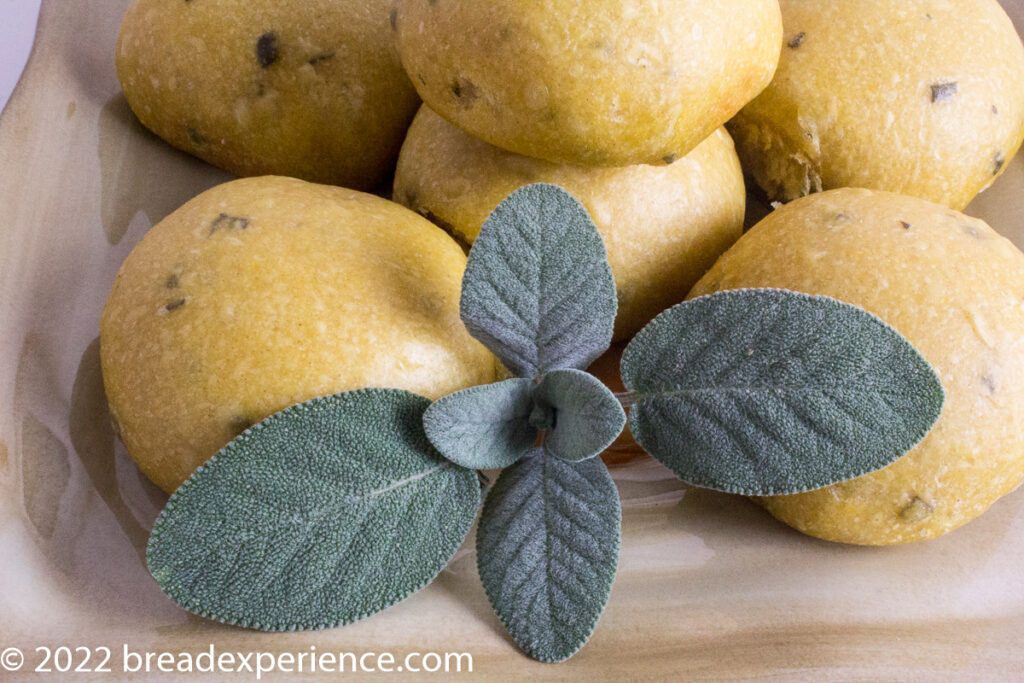
How to roast the sweet potato for these sourdough milk bread rolls
Preheat oven to 400 F. Cut the ends off of a sweet potato and place it whole on a baking sheet lined with parchment paper. Bake until tender. This should take about 45 minutes.
When the potatoes are done, they should pierce easily with a knife or fork. Slice the baked sweet potato in half lengthwise and scoop the flesh out into a bowl. Mash well.
- Flesh of purple-skin sweet potato
What type of wash (or finish) should you use on these tangzhong rolls?
You can brush these rolls with an egg wash, a milk wash, or melted butter, depending on what texture you are aiming for.
I’ve tested these rolls using an egg wash, which helps the buns brown on top, but that wasn’t quite the effect I was looking for.
To achieve a more supple texture, I like to brush the sweet potato rolls with milk before baking and melted butter after they are baked, but before they cool down. The milk wash provides a softer texture than an egg wash and the melted butter makes them shiny.
If you brush melted butter on the outside, you don’t necessarily have to spread any butter on the inside. Of course, that’s up to your guests, but mine always seem to want to grab a roll and bite into it without fussing over adding extra butter.
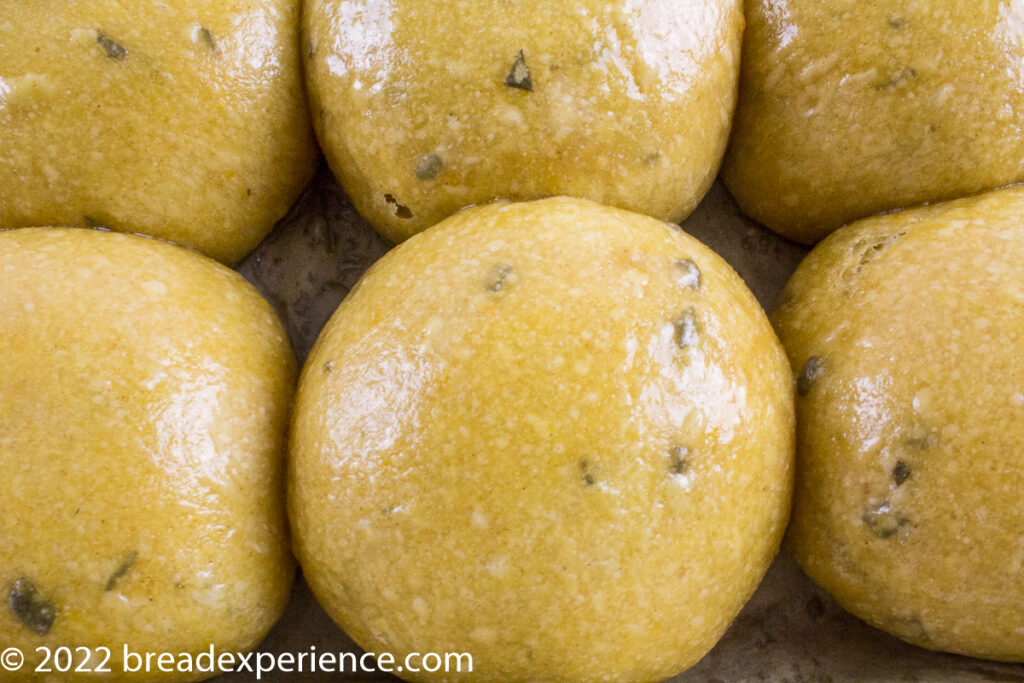
Notes:
I used almond milk in these rolls, but you can use regular dairy milk if desired.
These rolls can be prepared and baked on the same day, or if it works better for your schedule, shape the rolls, place them in refrigerator overnight and bake the next day. Let them warm up to room temperature before baking. You can also bake and freeze the rolls ahead of time to save on prep for Holiday baking.
These rolls freeze well. Cool completely and place in freezer bags. Let them thaw before warming and serving.
Using a stand mixer is the most effective way to mix this dough.
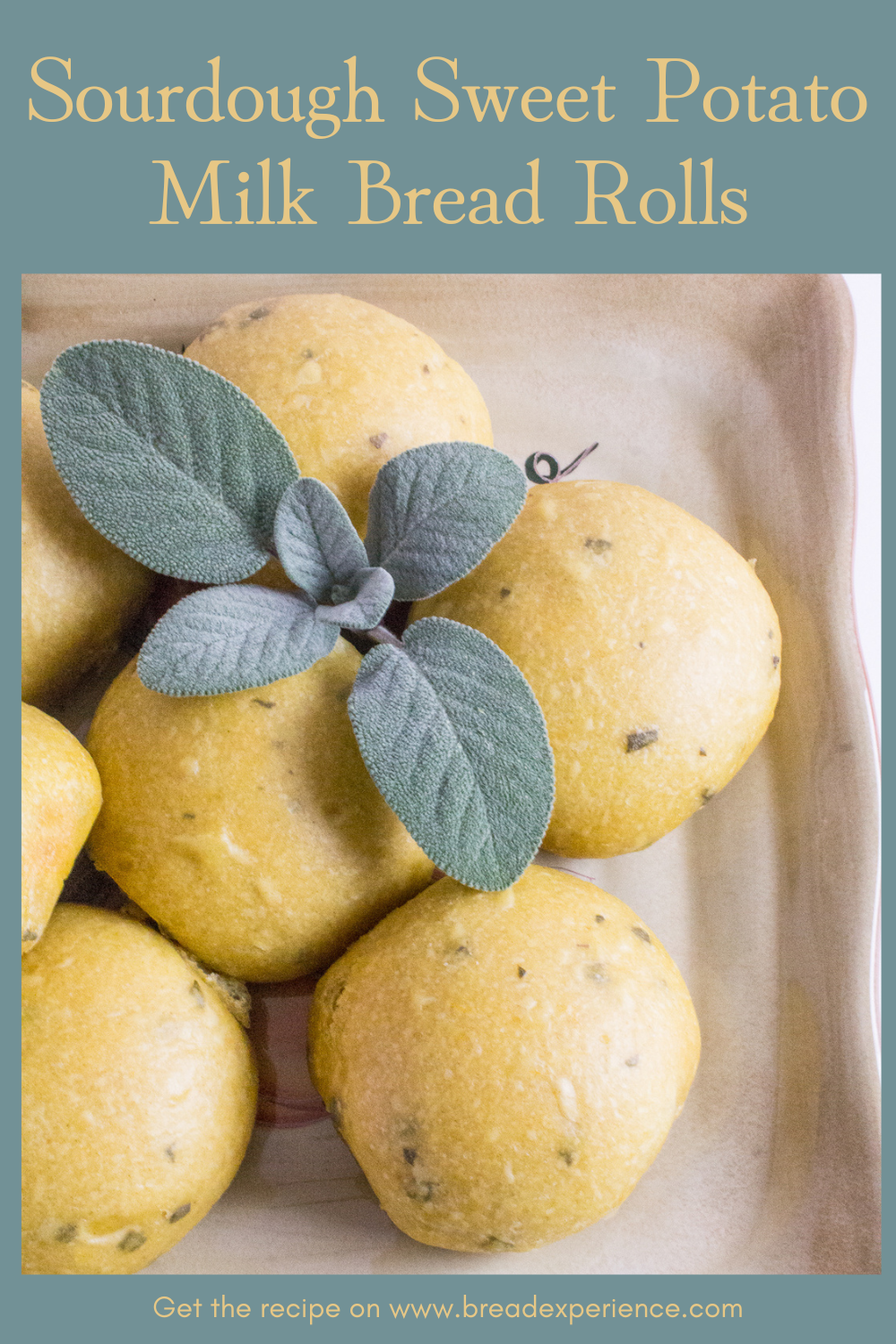
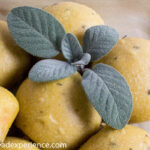
Sweet Potato Sage Sourdough Milk Bread Rolls
- Yield: 12 Rolls 1x
Description
These Sweet Potato Sage Sourdough Milk Bread Rolls have a lovely golden color due to the inclusion of roasted sweet potato; a fluffy texture from the tangzhong roux; and a warm buttery flavor with a hint of sage.
Ingredients
Tangzhong:
- 80 grams (1/3 cup) milk (dairy or non-dairy)
- 20 grams (2 Tbsp.) all-purpose flour
Dough:
- 375–425 grams (3- 3 3/8 cups) all-purpose flour
- 30 grams (1/4 cup) granulated sugar
- 8 grams (2 1/2 tsp.) kosher salt
- 28 grams (2 Tbsp.) unsalted butter
- 14 grams (1 Tbsp.) olive oil
- 1–2 Tbsp. (or as desired) fresh sage, finely chopped
- 120 grams (1/2 cup) milk (dairy or non-dairy)
- 100 grams (~1/3 cup + 1 Tbsp.) sourdough starter, active and recently fed
- 100–125 grams (1/3-1/2 cup) roasted sweet potato (see notes for roasting tips)
- Milk for brushing, optional
- Melted butter for brushing, optional
Instructions
Making the Tangzhong:
- In a small sauce pan, whisk the flour and water together until there are no lumps. Cook over medium-low heat, stirring constantly, until the mixture reaches 150 degrees and then remove it from the heat. If you don’t have an instant read thermometer, remove the mixture when it is thick and the spoon begins to make trails.
- Scrape the mixture into a clean bowl, cover, and allow it to cool completely.
- You can make the roux ahead of time and keep it in the refrigerator for a couple of days. After the mixture cools, cover it with plastic wrap and place it in the refrigerator. If it turns gray, throw it out.
Making the Dough:
- In the bowl of a stand mixer, mix together 250 grams (2 cups) flour, sugar, and kosher salt. Let rest.
- In a medium sauce pan, sauté the chopped sage in the butter and olive oil until the sage is softened and the butter is golden brown. Pour in the milk and mix thoroughly. Let cool to 120 to 130 F.
- Add the warm milk mixture to the flour. Using the dough hook, mix at low speed until there are no bits of dry flour. Blend in the tangzhong roux on low speed until thoroughly combined.
- Add the sourdough and mix on low speed until well blended. Gradually add 125 grams (1 cup) flour, beat on low speed just until combined. Let rest 15 minutes.
- Add the roasted sweet potato and mix on low speed until thoroughly integrated into the dough.
- Beat at low speed until a soft, tacky dough forms. Scrape the sides of the bowl, as needed. If dough is too sticky, sprinkle in flour, 1 tbsp. at a time, as needed, up to ¼ cup.
- Remove the dough to a large bowl. Cover, and let the dough ferment for 2-3 hours. Stretch and fold the dough, 2 times, every 40 minutes, then allow the dough to rest for an additional 1-2 hours.
- Line a 9×13-inch baking pan with parchment paper.
- Remove the dough to a counter lightly sprinkled with flour. Knead briefly to remove air, shape into a rough ball and let rest 5 minutes.
- Divide dough into 12 portions, about 71 grams each. Form each portion into a ball and place seam side down in the baking pan.
- Allow the rolls to proof for 2 hours at room temperature, then place in the refrigerator overnight for a cold ferment.
- OR, continue to the baking phase once the rolls are fully proofed.
- If you give the shaped rolls a cold ferment overnight, the next day, take them out of the refrigerator and allow them to warm up to room temperature.
- Preheat the oven to 375 F., with a rack placed in the lower shelf of the oven, about 15 minutes before you plan to bake the rolls. (In my 5-rack oven it’s the 2nd shelf from the bottom.)
- Brush the rolls with milk (or an egg wash, if preferred). Bake for 7 minutes on the lower shelf, then move rack to the middle shelf, rotate pan, and bake an additional 7 minutes. Move rack up one more shelf, then bake 1 minute more to achieve golden brown color.
- Let the rolls cool in the pan for 5 minutes. Brush with melted butter. Serve warm or at room temperature. Store in an airtight container for up to 2 days.
Notes
These rolls can be prepared and baked on the same day, or if it works better for your schedule, shape the rolls, place them in refrigerator overnight and bake the next day. Let them warm up to room temperature before baking. You can also bake and freeze the rolls ahead of time to save on prep for Holiday baking.
These rolls freeze well. Cool completely and place in freezer bags. Let them thaw before warming and serving.
Roasting the sweet potato – Preheat oven to 400 F. Cut the ends off of a sweet potato and place it whole on a baking sheet lined with parchment paper. Bake until tender. This should take about 45 minutes. When the potatoes are done, they should pierce easily with a knife or fork. Slice the baked sweet potato in half lengthwise and scoop the flesh out into a bowl. Mash well.
- Category: Milk Bread Buns

Happy Baking!
Cathy
THIS POST MAY CONTAIN AFFILIATE LINKS. FOR MORE INFORMATION, PLEASE VISIT THE PRIVACY POLICY PAGE.
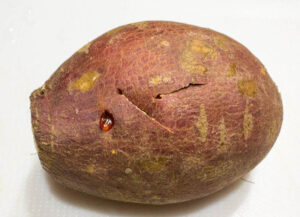
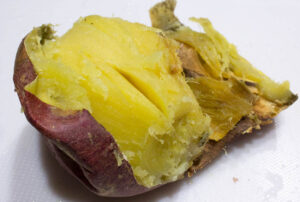
Mike Avery says
Have you tried baking them directly from the fridge? The difference in temperature between room temperature to oven temperature and refrigerator to oven temperature really isn’t significant. Master baker Jeffrey Hamelman suggests baking directly from the fridge if your dough is fully risen.
Cathy says
I haven’t tried baking these particular rolls straight from the fridge. However, I have used that method with other breads, and it works well. You’re right, the key is to make sure they are fully proofed. Thanks!